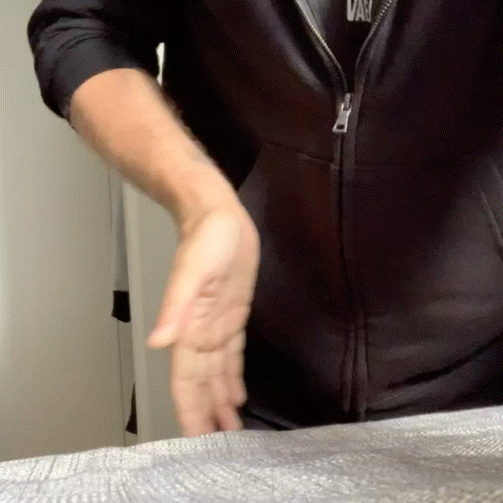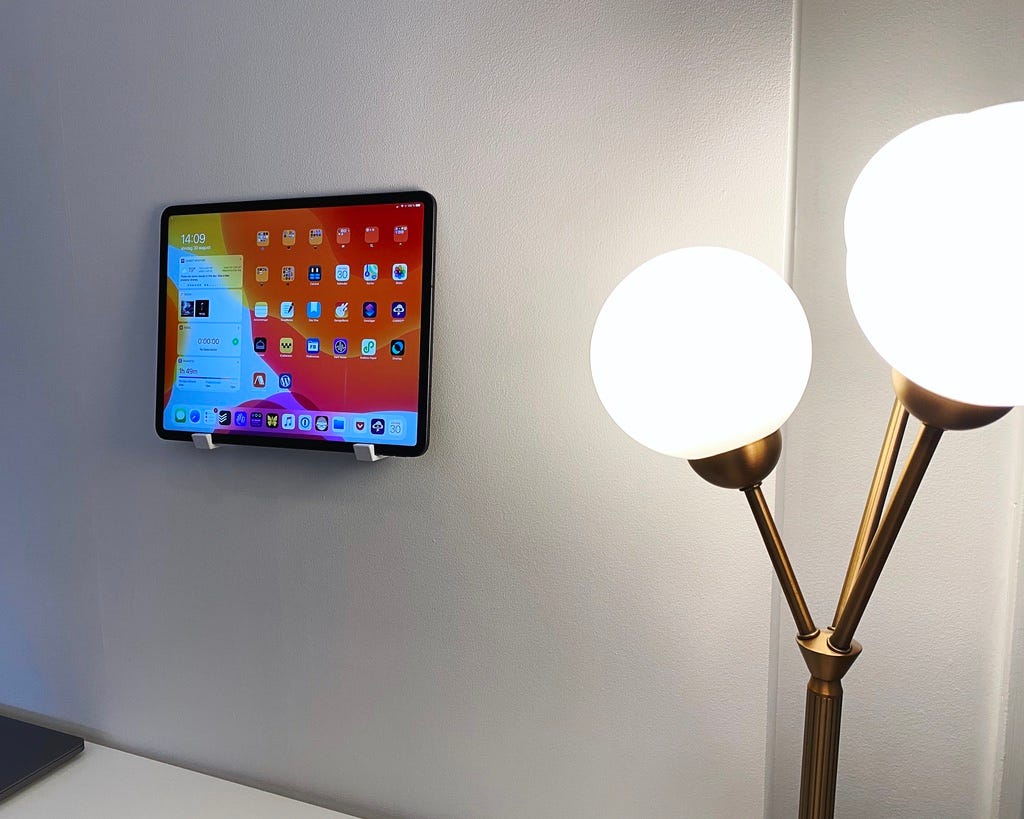🆓 This member post is free for all, thanks to our paying subscribers. Enjoy!
Hi there!
Ergonomics, that sounds like a pretty boring topic, right? Well, it’s boring until you get back or neck problems, or pain in your elbows and wrists. This is common amongst people working at a desk. Especially so now that most rely on a laptop as our primary work computer.
Working from an iPad can be just as bad, so that’s what we’re going to focus on in this issue.
My name is Thord D. Hedengren, and I don’t have any neck or back problems at all. Well, except what I get from that cheap pillow I have in my summer home, that one always makes me wake up stiff. But at least it isn’t the iPad’s fault, right?
Let’s talk saving our bodies from unnecessary pain, shall we?
Posture, posture, posture
The general rule is this: Sit straight but comfortable, arms falling down to about 90 degrees, type with straight wrists, and be level with the screen.
Anyone using a laptop, either flat on a desk or in their laps, will strain the neck, because you can’t be level with the screen. In fact, most angles will be off, it’s just not good for you at all. That’s why there are laptop stands that elevate the laptop so that you can look at the screen in a more level fashion. Obviously that requires stand-alone mouse and keyboard, which – unfortunately – is unavoidable if you want to limit the damage of being nailed to the screen.
Looking at the iPad in particular, there are two ways typists will use such a device. Either it’s in a case, be it the popular Magic Keyboard for iPad Pro or a Brydge or Logitech keyboard case, or sat on a separate stand with a bluetooth keyboard. The keyboard cases are, unfortunately, hopeless because they’re as tied to a faulty form factor as the laptop is. If you have a stand-alone keyboard and propping your iPad on a stand you have alternatives. So let’s look at some setup variants, shall we?
Setup variants
You want to sit up straight and look at your screen at a comfortable level, so the key is to elevate the iPad enough. A propped up stand, like the one I use from Lamicall or just about any other one out there, will do the trick. How do you get the iPad high enough though? Stacks of books will do it, a shelf too – whatever works really.
Christopher Lawley at The Untitled Site has got a nice twist on the propped up stand method. He’s using a traditional laptop stand, but then he puts his iPad Pro in the Magic Keyboard on there, so that it elevates the iPad properly. It seems to work well for him, so maybe it’s a good solution for you too? If you’re interested in Christopher’s setup, he did a video of it for The Sweet Setup.
Another good way to elevate your iPad is to use a tablet arm. You could clip one of those to your desk, but there are floor models as well if that’s a better fit for your setup. This will let you position the iPad wherever you want, which could be very useful of course. On the downside, it’s not particularly pretty, is it?
I have two setups myself, one in my summer home and another one in the apartment. We’ve already talked about my setup in detail in issue 3 so I’ll refer to that if you want the nitty-gritty details of the gear, but the short version is this. My iPad Pro sits in a Lamicall tablet stand in the summer home, connected to a 27” BenQ 4K monitor with Thunderbolt and a proper stand, thus making sure I keep my posture right. I didn’t have room for a monitor in the makeshift pandemic office we set up in the apartment through, so I had to get creative. There, my iPad sits on two coat hangers (!) that I mounted in the right height, thus making sure I not only have a comfortable view of the iPad’s screen, but also utilizing it as a secondary screen when I need to do work on my Macbook Pro. Wall mounting your iPad might be a good solution for you too, although a shelf or similar would get it done too.
🖊 A versatile platformI try to switch it up as much as possible, working on my iPad. That means I’ll pace around while reading, sit in a comfortable armchair while sketching with the Apple Pencil, and basically just being at my desk for serious typing, coding, or designing. Try to move, it’ll do you good.
A note on screen size
I’m not going to go into things like how to hold your hands while typing and the like, there are better places to get advice on things like that. I will however bring up screens, and screen sizes.
First of all, the thing you use the most on just about any computing device is the screen. You look at it all the time, so don’t skimp out on the screen. That’s easy enough with (modern) iPads, because they’re all great – it’s just a matter of how great they are. The size, however, is a potential problem. I’m typing this wearing glasses I don’t technically need – my vision is good enough. But the thing is, small screens render small text, and that will put more strain on your eyes. I don’t care how young or old you are, chances are you’d be better off with larger type than you currently read. That can sometimes mean a larger screen. We talked a bit about this in issue 2, which was all about picking the right iPad for your switch, but it bears repeating. Personally, I went from the 11” 2020 iPad Pro that I’d longed for so long, to the 12.9” 2020 on (I actually went back to the 2018 version first because it’s just about as good), mostly for the Magic Keyboard size, but not only that. I prefer the larger screen, it’s easier on my old eyes.
And I bump the type size in just about every app I can, albeit not on a system level because it’s ugly. Maybe I should though.
Screen size on an iPad will always be a tricky disposition, especially if you want a reasonable workspace based on a desk. If I’d wall mount an iPad mini, it would give me the right viewing angle, but I’d struggle reading the type without blowing it up. There’s a balance to all things. Make it comfortable, then make it more so, and you’ll be fine.
Bonus tips from a personal trainer
My brother Stefan is a personal trainer, and has trained numerous weightlifting champions (yes, really). He’s sharing some tips for us office rats on how to better cope with a stationary profession.
- Stand, don’t sit. Sitting down bring a whole slew of problems.
- Hang from a pull-up bar, stairs, branch, whatever, and relax. This can do wonders for back and shoulders.
- Problems with wrists from mouse or touch screen usage are common. Here are two stretch exercises that help.


Note the rotation of the elbow on these exercises.
🦾 Stefan has a website, podcast, newsletter, and Youtube channel if you want to learn more about serious training. Do check it out!
Getting your workspace setup right is tricky, but not actually hard. You just have to find the peripherals you need, be it tablet holders attached to your desk, or a stack of books – whatever works, right? I hope this issue gave you some ideas to help you take better care of your body. I’d love to hear about your setup, so don’t hesitate to hit reply and share a photo, or tell me about it.
That’s it for today. I’ll see you all next week.
In the wild…

